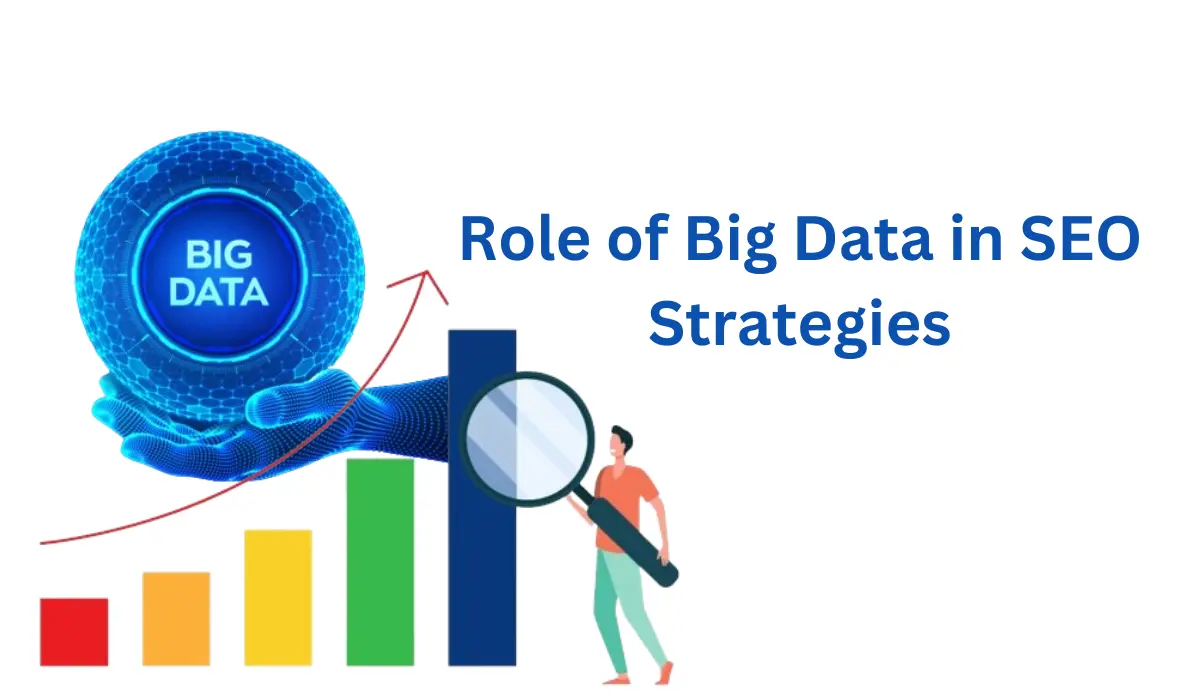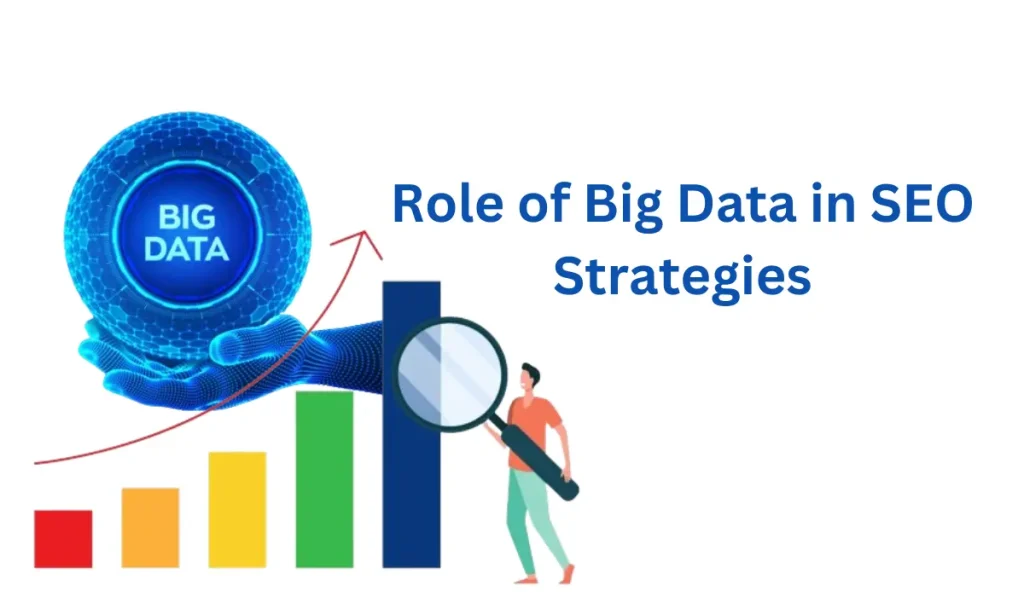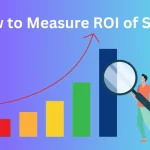In the ever-evolving landscape of digital marketing, Search Engine Optimization (SEO) remains a cornerstone for businesses striving to enhance their online visibility and drive organic traffic to their websites. However, as search engine algorithms become increasingly sophisticated and user behavior continues to evolve, traditional SEO strategies alone may not suffice. Enter big data – the vast reservoirs of information generated from various online sources. Leveraging big data has become instrumental in shaping and refining SEO strategies, enabling businesses to stay ahead in the competitive online arena. In this context, we talked about the role of big data in SEO strategies.
Understanding Big Data in SEO
Big data in the context of SEO refers to the massive volume of structured and unstructured data collected from various sources, including search engines, social media platforms, website analytics tools, and more. This data encompasses user search queries, website traffic patterns, demographic information, user preferences, and engagement metrics, among other insights.
Personalized Search Experience
One of the most significant impacts of big data on SEO is its ability to facilitate personalized search experiences. Search engines, such as Google, utilize big data analytics to understand user intent and deliver highly relevant search results tailored to individual preferences and behaviors. By analyzing vast amounts of user data, search engines can predict search intent more accurately, leading to improved rankings for websites that align closely with user needs and interests.
Personalized search aims to deliver search results that are relevant and meaningful to each user’s unique context. Traditional SEO strategies focus on optimizing content for specific keywords and ranking factors. However, personalized search goes beyond keyword relevance to consider factors such as the user’s location, search history, device type, and browsing behavior. By analyzing vast amounts of data collected from various sources, including search engines, social media platforms, and website analytics tools, businesses can tailor search results to match the preferences and interests of individual users.
Big Data Insights Driving Personalization
At the core of personalized search experience lies big data analytics, which provides actionable insights into user behavior and preferences. By aggregating and analyzing data from multiple sources, businesses can gain a comprehensive understanding of their target audience and create personalized search experiences that resonate with individual users. Big data enables businesses to track user interactions, identify patterns, and predict future behavior, allowing them to deliver highly relevant and timely search results.
Tailoring Content and Recommendations
Personalized search experience enables businesses to customize content and recommendations based on user preferences and interests. By leveraging big data insights, businesses can segment their audience into distinct personas and create targeted content that addresses the unique needs of each segment. Whether it’s recommending relevant products, suggesting related articles, or surfacing personalized offers, businesses can use personalized search to engage users and drive conversions.
Localized Search Optimization
For businesses with a physical presence, localized search optimization is crucial for attracting local customers and driving foot traffic to brick-and-mortar locations. Personalized search experience allows businesses to optimize their online presence for local search queries by leveraging geolocation data and user preferences. By tailoring search results to include relevant local businesses, events, and attractions, businesses can enhance their visibility in local search results and connect with nearby customers in real-time.
Improving User Engagement and Retention
Personalized search experience not only enhances user satisfaction but also improves engagement and retention rates. By delivering search results that are tailored to the user’s interests and preferences, businesses can increase the likelihood of users clicking on search results, exploring multiple pages, and returning to the website for future visits. Moreover, personalized search enables businesses to nurture long-term relationships with customers by providing relevant content and recommendations that keep them coming back for more.
Content Optimization and Keyword Targeting
Big data analytics enables SEO professionals to gain deeper insights into trending topics, popular keywords, and content preferences among their target audience. By analyzing search trends and user behavior patterns, businesses can identify lucrative keywords with high search volumes and low competition, allowing them to optimize their content effectively. Additionally, big data analytics can provide valuable insights into the types of content formats (e.g., articles, videos, infographics) that resonate most with their audience, enabling them to tailor their content strategy accordingly.
Content optimization involves fine-tuning various elements of content to improve its relevance, quality, and visibility in search engine results. From crafting compelling headlines and structuring content for readability to optimizing meta tags and incorporating multimedia elements, content optimization encompasses a range of techniques aimed at enhancing user experience and search engine discoverability. By aligning content with user intent and search engine algorithms, businesses can increase the likelihood of their content ranking prominently in search results and attracting organic traffic.
The Role of Keyword Targeting
Keywords serve as the foundation of SEO, acting as the bridge between user queries and relevant content. Keyword targeting involves identifying and strategically incorporating relevant keywords into content to improve its visibility and relevance for specific search queries. By conducting keyword research and analyzing search trends, businesses can identify high-potential keywords with significant search volume and relatively low competition. Moreover, businesses can leverage long-tail keywords and semantic variations to capture niche audiences and address specific user queries effectively.
Strategies for Content Optimization and Keyword Targeting
Keyword Research and Analysis: Begin by conducting comprehensive keyword research to identify relevant keywords and phrases that align with your target audience’s search intent. Utilize keyword research tools, competitor analysis, and data insights to uncover valuable keyword opportunities.
Content Planning and Creation: Develop a content strategy that incorporates targeted keywords naturally into your content while maintaining relevance and readability. Create high-quality, informative, and engaging content that addresses the needs and interests of your target audience.
On-Page Optimization: Optimize various on-page elements, including title tags, meta descriptions, headers, and URLs, to include targeted keywords and improve search engine visibility. Ensure that your content is properly structured, formatted, and optimized for both users and search engines.
Content Updates and Maintenance: Regularly monitor and update your content to ensure its relevance and accuracy over time. Analyze user feedback, search trends, and performance metrics to identify opportunities for improvement and optimization.
Multimedia Integration: Enhance your content with multimedia elements, such as images, videos, infographics, and interactive elements, to enrich the user experience and increase engagement. Optimize multimedia assets for search engines by including descriptive filenames, alt tags, and relevant metadata.
User Engagement and Feedback: Encourage user engagement and feedback through comments, reviews, social media shares, and other interactive features. Monitor user interactions and incorporate user-generated content and insights into your content optimization and keyword targeting strategies.
Enhanced User Experience
User experience (UX) is a crucial factor in SEO, as search engines prioritize websites that provide a seamless and engaging browsing experience for users. Big data analytics can help businesses understand user behavior on their websites, identify pain points, and optimize their site structure and navigation accordingly. By analyzing metrics such as bounce rate, time on page, and conversion rates, businesses can identify areas for improvement and implement targeted strategies to enhance the overall user experience, ultimately leading to higher search engine rankings.
Enhanced user experience refers to the practice of optimizing websites and digital platforms to meet the needs and expectations of users effectively. It involves creating intuitive navigation, providing relevant and engaging content, optimizing for speed and performance, and ensuring accessibility across devices and screen sizes. By prioritizing user experience, businesses can create positive interactions that keep users engaged, satisfied, and coming back for more.
Impact of Enhanced User Experience on SEO
Lower Bounce Rates: Websites with intuitive navigation, relevant content, and fast load times tend to have lower bounce rates, indicating that users are more likely to explore multiple pages and engage with the content.
Longer Dwell Times: Engaging content and seamless navigation contribute to longer dwell times, signaling to search engines that users find value in the content and are spending more time on the website.
Higher Click-Through Rates: Websites that provide a positive user experience often see higher click-through rates in search engine results, as users are more likely to click on links that are relevant and enticing.
Improved Conversion Rates: A positive user experience can lead to higher conversion rates, whether it’s completing a purchase, filling out a form, or signing up for a newsletter. By removing barriers and friction points, businesses can increase the likelihood of users taking desired actions.
Strategies for Enhancing User Experience in SEO
Mobile Optimization: With an increasing number of users accessing the web from mobile devices, optimizing websites for mobile responsiveness is crucial. Ensure that your website is mobile-friendly and provides a seamless experience across devices.
Page Speed Optimization: Improve page load times by optimizing images, minifying code, and leveraging caching techniques. Fast-loading pages not only enhance user experience but also contribute to higher search engine rankings.
Intuitive Navigation: Simplify website navigation by organizing content logically and providing clear menu structures and navigation paths. Make it easy for users to find the information they’re looking for without having to navigate through multiple pages.
Quality Content Creation: Create high-quality, relevant, and engaging content that meets the needs and interests of your target audience. Use clear and concise language, break up content into digestible chunks, and incorporate multimedia elements to enhance readability and engagement.
Optimized Multimedia: Optimize images and videos for faster load times and better accessibility. Use descriptive filenames, alt tags, and captions to provide context and improve search engine visibility.
User-Centric Design: Design websites with the user in mind, focusing on usability, accessibility, and readability. Use consistent branding, intuitive layouts, and clear calls-to-action to guide users through the website journey.
Also Read
Predictive Analytics and Forecasting
Big data analytics empowers SEO professionals with predictive capabilities, allowing them to anticipate future trends and make informed decisions about their SEO strategies. By analyzing historical data and identifying patterns and correlations, businesses can forecast changes in search engine algorithms, emerging keywords, and shifts in user behavior. This enables them to adapt their SEO strategies proactively, stay ahead of the competition, and capitalize on emerging opportunities in the ever-changing digital landscape.
Anticipating Algorithm Changes
Search engine algorithms are constantly evolving, with updates and changes occurring frequently. Predictive analytics enables businesses to anticipate algorithm changes by analyzing historical data and identifying patterns in algorithm updates. By monitoring signals such as search engine announcements, industry trends, and competitor activities, businesses can predict potential changes in search engine rankings and adjust their SEO strategies accordingly. Whether it’s preparing for major algorithm updates or adapting to subtle shifts in ranking factors, predictive analytics provides businesses with valuable insights into the ever-changing landscape of SEO.
Leveraging Predictive Analytics for SEO Success
Data Collection and Integration: Gather data from various sources, including website analytics tools, search engine consoles, and third-party platforms. Integrate data from disparate sources to create a unified data repository for analysis.
Data Preprocessing and Cleaning: Cleanse and preprocess data to remove noise, errors, and inconsistencies. Standardize data formats, resolve missing values, and eliminate outliers to ensure data quality and reliability.
Feature Selection and Engineering: Identify relevant features and variables that influence SEO performance, such as keywords, backlinks, content metrics, and user engagement signals. Use domain knowledge and statistical techniques to select and engineer informative features for predictive modeling.
Model Training and Evaluation: Train predictive models using historical data and evaluate their performance using metrics such as accuracy, precision, recall, and F1-score. Use techniques such as cross-validation and hyperparameter tuning to optimize model performance and generalization.
Scenario Analysis and Sensitivity Testing: Conduct scenario analysis and sensitivity testing to assess the impact of potential changes and uncertainties on predictive outcomes. Explore different scenarios, assumptions, and inputs to understand the range of possible outcomes and make robust decisions.
Continuous Monitoring and Refinement: Monitor model performance over time and refine predictive models as new data becomes available. Continuously update models with fresh data, retrain them periodically, and incorporate feedback and insights to improve accuracy and reliability.
End Words
Big data has emerged as a game-changer in the field of SEO, revolutionizing the way businesses approach search engine optimization. By harnessing the power of big data analytics, businesses can gain deeper insights into user behavior, personalize search experiences, optimize content effectively, enhance user experience, and make informed decisions about their SEO strategies. As search engines continue to evolve and user expectations evolve, leveraging big data will be essential for businesses looking to maintain a competitive edge and achieve sustainable growth in the digital age.





